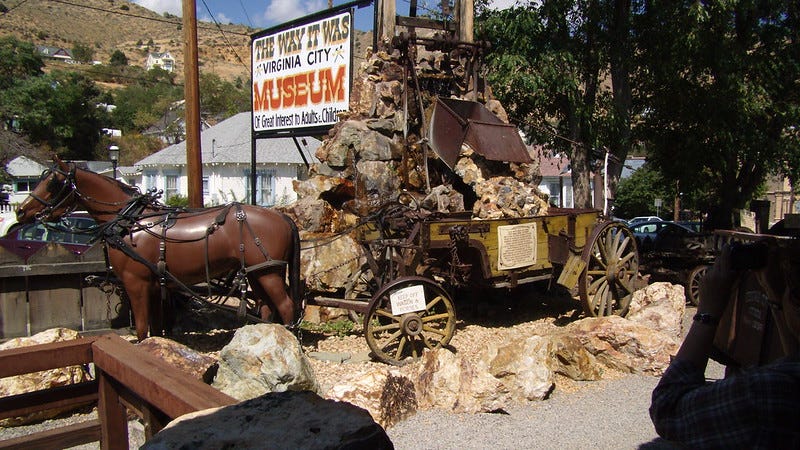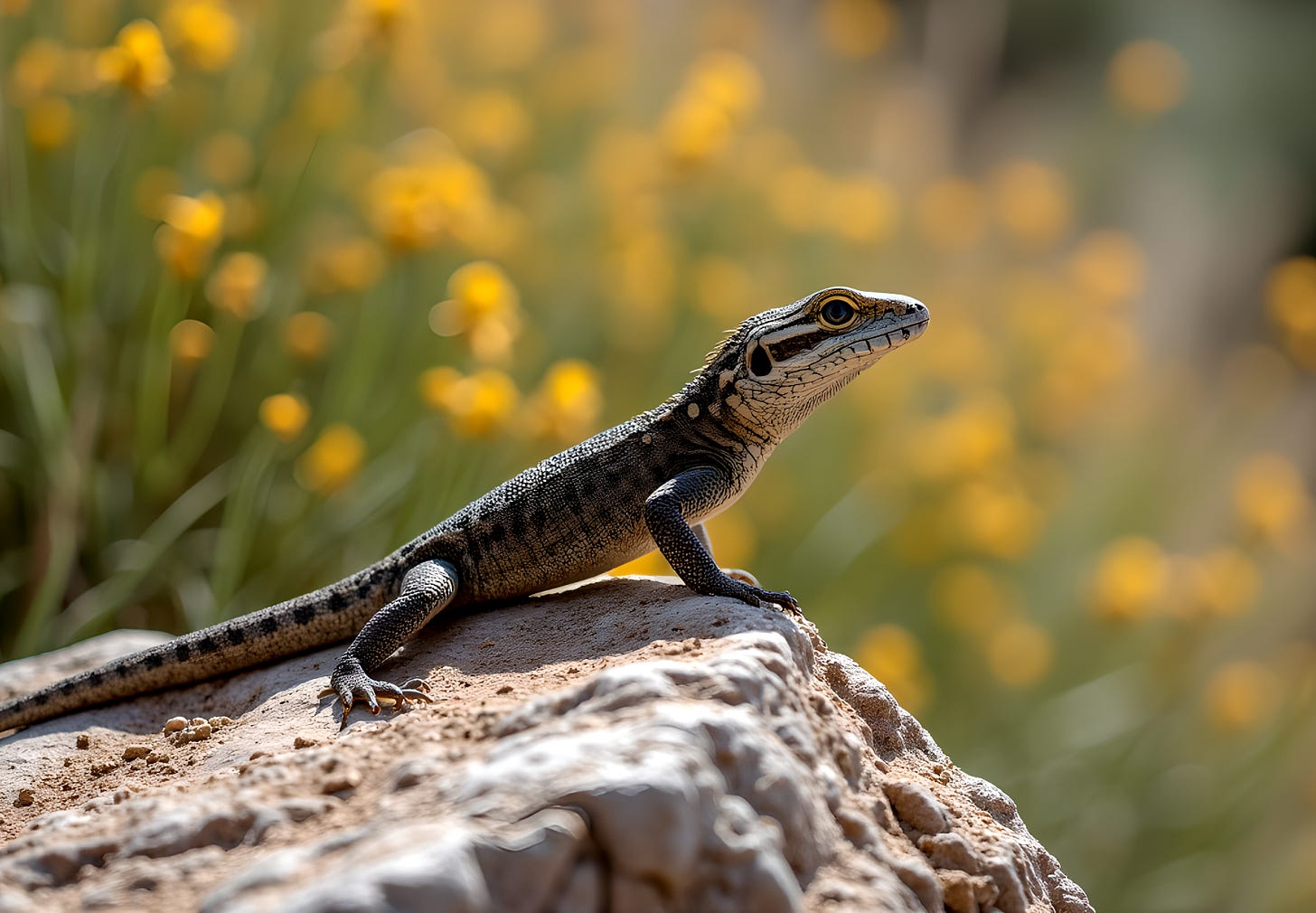The West That Was, and Still Is
Where Myth Rides Beside Memory: Echoes of America #3
“In the West, the sun sets slow, the land stretches wide, and the stories never quite end…”
Virginia City Museum The Way It Was… Photo by Rene Averett
To listen to this post, please click on play below:
He opened the box on Christmas morning and gasped. A Native American bolo tie, arrowhead design, sent from Nevada. My friend’s father—born and raised in Britain—held it like a relic from a dream. To him, the American West was still wild: cowboys, campfires, and saloon doors swinging in the desert wind.
I smiled. Because I knew the truth.
The West isn’t gone—it’s just changed hats.
🐎 “Ah, the Wild West!”
Cowboys, Swinging Doors, and the Reality Beneath the Myth
When I was traveling in Great Britain, someone asked where I was from. I said I lived in Nevada but was originally from Texas. His eyes lit up: “Ah, the Wild West. Cowboys and saloon swinging doors, right?”
I had to laugh—and gently correct him. Not for about a hundred years.
Thanks to western movies and TV shows, the whole world, including the East Coast of the United States, has an outdated view of the American West. While ranches and cowboys are still part of the scene, the towns have grown up like the rest of the country. The great Southwest has many ranches, rodeos, and the like, but only a few ghost towns might still have those swinging saloon doors.
Tourists come to Nevada thinking it’s a small state. They assume Las Vegas and Reno are neighbors, but over 400 miles separate the two cities. Thanks to Bonanza, they expect to reach Virginia City from the Ponderosa Ranch in a short ride—but it’s about thirty miles, down one mountain, across a valley, and up another. There was no way Little Joe or Hoss could ride into town in the time the series suggested.
Don’t misunderstand—the West still has small towns where old buildings survive and you can relive the frontier days. But in the cities, very little remains of those early echoes.
The Myth of the West: Where Time Stretches and States Sprawl
People still picture the West as a sepia-toned showdown: tumbleweeds, saloons, and lone riders silhouetted against the sunset. But the real West? It’s bigger, stranger, and far more layered than the 1850s ever dreamed.
Take Nevada. It’s not just desert, mountains, and neon—it’s vast. Bigger than Ireland. Bigger than Great Britain. Bigger than a whole bouquet of East Coast states combined. You could tuck Rhode Island, Delaware, Connecticut, and New York into its folds and still have room for a few ghost towns and a missile testing range.
And Texas? Texas is its own myth. Drive across it and you’ll understand the old saying:
“The sun has riz; the sun is set, and here we is in Texas yet.”
It’s not just a joke—it’s a spatial truth. The West doesn’t just stretch your legs, it stretches your sense of time. A two-hour drive might get you to the next gas station. Or not.
🏙️ The Modern West: Cities, Culture, and Comfort
Today’s West is full of vibrant cities with restaurants, theaters, and tech hubs. Reno and Las Vegas host art festivals, pro sports, sushi bars, and casinos. Austin pulses with live music and innovation. The frontier has Wi-Fi now and high-tech industries.
But behind the city lights, the old rhythms still echo.
🌾 Where the Myth Still Breathes
Small towns dot the landscape where ranchers and farmers still work the land. Horses run wild in the hills. (Heck, the Virginia City herd often visit our yard if we leave the gate open. They love the apple tree and the pond.)
Cowboys still ride out—but now with GPS, hydraulic saddles, and insulated coffee mugs clipped to their saddlebags.
Modern ranching blends tradition with technology:
Longhorn cattle still graze, but ranchers use drones to monitor herds.
Cowboys wear Stetsons, but also Carhartt and Kevlar.
Branding irons coexist with RFID tags.
🎬 The Myth That Won’t Quit
The “Wild West” image—cowboys, saloons, shootouts—was shaped by dime novels, Wild West shows, and Hollywood. John Ford’s The Man Who Shot Liberty Valance famously declared:
“When the legend becomes fact, print the legend.”
And we did. Globally, the West became shorthand for freedom, grit, and individualism. Even today, the cowboy remains a symbol of rugged independence—even if he’s checking cattle stats on his phone.
Western novels are still popular, and Cowboy Romance has evolved along with the modern West. The myth endures—not because it’s accurate, but because it speaks to something deeper.
🌄 Perspective at 30,000 Feet
On a flight back from Britain, an English family sat near me. As we flew over Nevada’s vast deserts and high mountains, the boy leaned toward the window and said, “Oh, look at the mountains and desert. It’s so beautiful!”
It struck me then—beauty is all in your perception.
He’d grown up in a lush, green country. The desert was new to him.
And in that moment, the myth of the West wasn’t dusty or outdated—it was alive, shimmering beneath the airplane wing.
🌅 Final Echo
The sunsets in the West are spectacular—especially over mountains, where the light lingers like a promise. The desert, often mistaken for barren, bursts into color when the cacti bloom. More life exists here than you can imagine: tucked into sagebrush, hidden in rock crevices, dancing in the wind.
It’s not just a landscape.
It’s a living story.
💬 Your Turn: What Does the West Mean to You?
Whether you’ve lived it, dreamed it, or only seen it on screen—I’d love to hear your thoughts.
What images, memories, or myths come to mind when you think of the American West?
Drop a comment below or reply to this post. Let’s share stories, swap legends, and keep the echoes alive.





I was born in the West and spent 15 years in New England before coming home to tall mountains, wild horses, ghost towns, and the open space between them all. It really becomes a state of mind. There were things about New England that I loved, but I was never at home there. Give me small town west any day.
My family moved from southern Oregon to Fernley in 1980. We went from timber country to high desert. It was how different the rain smelled here that got me, along with the fast blue sky. Northern Nevada has changed so much since then but I can't think of a better place to live.